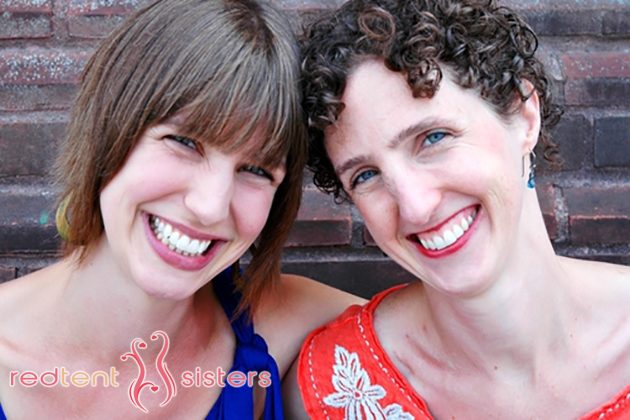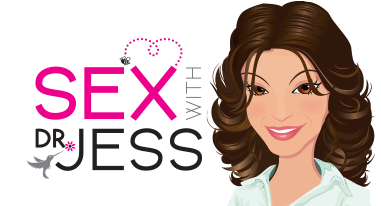April 12, 2017
Have You Heard of the Justisse Method?

You’re likely familiar with a wide range of birth control options from oral contraceptives to intrauterine systems. But have you heard of Fertility Awareness Methods (FAM) like the Justisse Method of Fertility Management. According to experts, the method is over 99% effective when used correctly, and not only preserves your health and fertility but enhances it by pointing you towards your own health needs and providing a means of monitoring improvement.
I had the opportunity to chat with the Rent Tent Sisters about reproductive health awareness and the Justisse method to learn more about their work and this health-focused approach to birth control. Check out the interview below and if you have any questions, please leave them in the comments below.
What inspired you to create awareness around fertility and reproductive health?
Amy: My work is inspired by my own health journey. As a teenager I had very, very heavy periods and irregular cycles. I had terrible pain and cramping with my period that would often cause me to miss school. I was put on the pill in high school to help “manage” my periods. It wasn’t until I came off the pill in my late twenties to get pregnant that I realized it had simply been masking my symptoms and I still had a host of menstrual health issues that needed addressing.
After I had my daughter I had another scare with hormonal birth control. My daughter started screaming every time I tried to breastfeed her. It turned out the birth control pill I was taking, which was mainly synthetic progesterone, was increasing my milk supply to the point where my daughter was choking when she tried to feed.
These two experiences led me to explore natural birth control options. As I learned more about my body and menstrual health, I realized how intricately connected our menstrual cycles are with our sexuality, our diet, our lifestyles and our stress levels. I feel passionately that everyone should know how their fertility works, and how our everyday decisions impact our hormonal health.
2. What is the Justisse method?
Amy: The Justisse Method is a fertility awareness method (FAM), which means it looks at multiple “biomarkers” or physiological indicators that tell us what is happening in our menstrual cycle at any given time. These biomarkers are menstruation, cervical mucus (which occurs leading up to ovulation under the influence of estrogen), a shift in core temperature (called a BBT shift) and changes in the cervix itself. By charting some combination of these biomarkers, we can accurately identify times of fertility and infertility, and thus make decisions about achieving or avoiding pregnancy. When used correctly, FAM can be as high as 99.4% effective for avoiding pregnancy.
3. How is Justisse different than the old school rhythm method?
Amy: The Rhythm Method came about due to research in the 1930s that showed that ovulation, on average, occurred about two weeks before menstruation. So using a single biomarker – date of last period – calculations were created to estimate when a person would be fertile. Unfortunately, because cycles are responsive to stress, illness, travel, and diet, this method had a high failure rate because it was based on calculations that presumed regular 25-35 day cycles. In this way, the Rhythm Method is what we call a retrospective or prospective method – it tries to anticipate future cycles based on past cycles. Almost all modern FAM methods, including the Justisse Method, use multiple biomarkers (as above) to account for irregularities in the menstrual cycle.
 By tracking mucus and BBT we can anticipate cycles with delayed ovulation and achieve effective contraception regardless of cycle length. For a more detailed explanation of the differences between FAM and the Rhythm/Calendar method you can check out our blog post on the topic.
By tracking mucus and BBT we can anticipate cycles with delayed ovulation and achieve effective contraception regardless of cycle length. For a more detailed explanation of the differences between FAM and the Rhythm/Calendar method you can check out our blog post on the topic.
4. Can you tell us about your app and who should use it? Is it for all women (e.g. those trying to get pregnant, those trying not to get pregnant, post-menopausal women)?
Amy: The app is designed for use by anybody at any reproductive stage, whether they are trying to achieve or avoid pregnancy or simply want to monitor their reproductive health. However, because it is based on the principles of tracking multiple biomarkers (cervical mucus, BBT, menstruation) it is best used by people who have undergone some kind of instruction in how to monitor and chart these signs of fertility. In order to use the advanced features of the app you must make a monthly donation (Justisse is a non-profit organization so fees simply go towards app support and improvements) but by doing so you also unlock access to the Justisse User Guide which provides lots of instruction on how to identify the different types of cervical mucus and how to take your temperature accurately in order to identify the point of ovulation.
5. Why/ how is the Justisse Method Charting App more effective than other fertility apps?
Amy: Unfortunately, many of the apps currently on the market are glorified versions of the rhythm method we discussed above. They take data about previous periods and then try to predict the date of future periods and thus of ovulation. For anyone with irregular cycles, a recent history of hormonal birth control use, clinical or subclinical hypothyroidism, PCOS, or who is peri-menopausal or breastfeeding, these apps will not accurately identify the fertile window. Furthermore, even those with regular cycles are apt to have the odd cycle in a year where things are a little different – either due to travel, stress, or illness. The Justisse App is designed to use the best current knowledge of the physiology of fertility to support charters to accurately identify their fertile window. There are a few other apps out there that use similar approaches but many of them are created and endorsed by Catholic organizations that do not support the values of the secular community.
6. What are some of the corollary benefits related to the Justisse Method (e.g. learning more about your body, developing connection to your genitals)?
Amy: This is perhaps the area where I get most excited. While most clients who come to work with me are motivated by the need for hormone-free birth control or help with getting pregnant, nearly everyone reports that the benefits of learning to use FAM go far beyond these goals. For one thing, it develops what we in the field call “body literacy” – an understanding of our hormones and how they are delicately coordinated each month. It removes much of the mystery about how our bodies work, which is deeply empowering, while also helping us gain appreciation for just how sensitive the whole system is and why we need to take care of ourselves.
Because the method requires periodic abstinence for birth control, clients actually ironically report improved sex lives using this method since it encourages non-penetrative forms of sex that are often more pleasurable for women. It also encourages diversity of sexual play which tends to increase experimentation and variety – all good things for keeping one’s sex life fresh!
Lastly, Fertility Awareness tends to foster more communication with partners about sex and desire. Since we have to communicate with our partners about whether we are in a fertile phase of the cycle or not, it encourages more open dialogue with partners about sex in general. Clients also become acutely aware that libido follows predictable highs and lows depending on where we are in our cycles. This helps both partners to not take it personally if you’re not in the mood, and to know that things will shift soon. In this way it also really encourages people to take back the power to say “no” when they are not in the mood and to also anticipate when it will be a definite “yes”! I have found in my clinical practice that this diminishes a lot of friction between couples when it comes to communicating our needs around sex.
Edits made by Kim Sedgwick.
Kim & Am y Sedgwick are the Co-Founders of Red Tent Sisters, a business that has been providing holistic fertility, sexuality and contraceptive solutions since 2007. Amy is certified as a Holistic Reproductive Health Practitioner. She specializes in helping women adopt hormone-free approaches to avoiding and achieving pregnancy. Kim coaches women who are ready to begin claiming and communicating their erotic desires. Together they provide support to women worldwide through their online courses, YouTube videos, and social media channels, and are known for their professional yet candid “sisterly” advice.
y Sedgwick are the Co-Founders of Red Tent Sisters, a business that has been providing holistic fertility, sexuality and contraceptive solutions since 2007. Amy is certified as a Holistic Reproductive Health Practitioner. She specializes in helping women adopt hormone-free approaches to avoiding and achieving pregnancy. Kim coaches women who are ready to begin claiming and communicating their erotic desires. Together they provide support to women worldwide through their online courses, YouTube videos, and social media channels, and are known for their professional yet candid “sisterly” advice.










